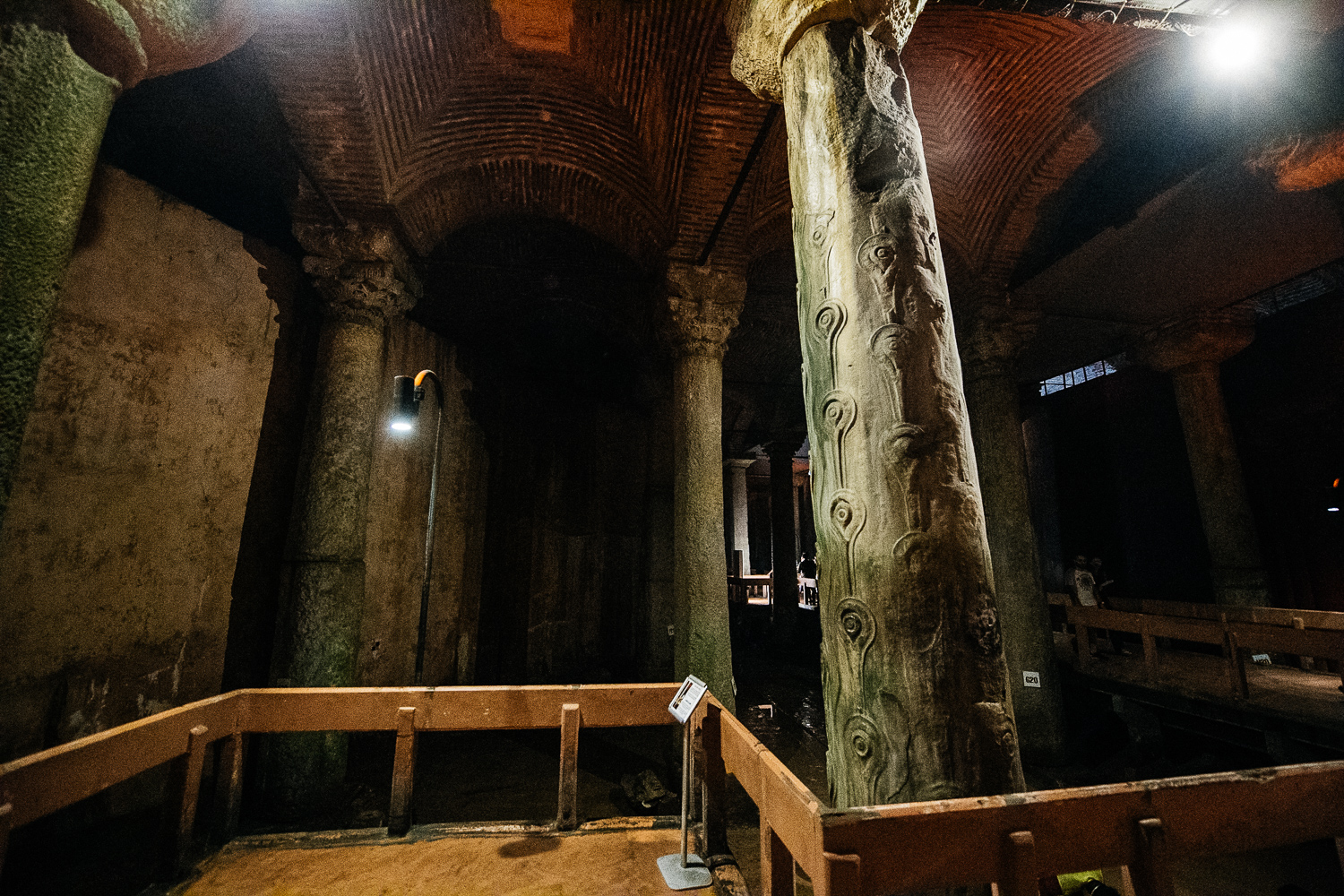The Underground Forest: Basilica Cistern’s Roman Columns
New Rome. Byzantium. Constantinople. Istanbul.
The city that is now Turkey’s largest metropolis has gone by many names over the centuries. With a population of 13 million, Istanbul spans two continents, often referred to as the gateway to the East—or the West, depending on your direction of travel.
At the heart of the city’s rich history lies Sultanahmet Square, the center of its major tourist attractions. On one side stands the magnificent Hagia Sophia, on the other, the equally stunning Blue Mosque, with the ancient Hippodrome nearby. All of this is just a short walk from the grand Topkapi Palace.
But what many miss—including me on my first visit—is a hidden marvel right next to Hagia Sophia: the Basilica Cistern, an underground forest of Roman columns.
Centuries ago, cities were walled to keep invaders out. In Istanbul, remnants of these ancient walls can still be seen today. However, walls not only kept invaders out—they also trapped people inside during sieges. When attackers couldn’t breach the walls, they would cut off supplies, forcing cities to surrender over time. To survive such sieges, a city had to stockpile essentials. And what’s the most critical resource to have on hand?
Water.
That’s where the Basilica Cistern comes in. This awe-inspiring structure, capable of holding 100,000 tons of water, was built to ensure a steady supply for the palace and the city for centuries.
Hidden underground, the cistern’s entrance is easy to miss from the street. But once you descend into this subterranean marvel, you’re transported to a world of majestic Roman engineering—a testament to the city’s resilience and ingenuity.
On this sidewalk is the entrance to the underground marvel that is the Basilica Cistern.
Once you go in, the first thing you see are the columns and the board walk built for tourists to visit the place.
The Basilica Cistern gets its name from the massive basilica that once stood on the same site.
Until 1985, visitors could only explore the cistern by boat—a unique experience famously featured in the James Bond film From Russia With Love. If you haven’t seen it, I highly recommend checking it out. That same year, a major restoration introduced the boardwalks that visitors use today. While they certainly make exploring easier and more tourist-friendly, I can’t help but feel they take away some of the original atmosphere.
The cistern has also made appearances in pop culture, notably in Assassin’s Creed Brotherhood and the climactic moments of Dan Brown’s Inferno. As a big fan of the AC series, you’ll find plenty of references to locations from the franchise sprinkled throughout this blog.
Stepping into the Basilica Cistern, you’re immediately struck by its cool, damp air and the distinct smell of humidity—a sensory reminder of its history as a vital water source for the city.
A line of tourists waits to take a picture in Turkish traditional clothing.
The cistern was built with reused materials from other sites in the Roman empire. In the Basilica Cistern you’ll be able to see Doric, Ionic and Corinthian columns.
When we visited they had drained to water for cleaning, so we didn’t get the full experience.
A lot of mud gets stuck in the bottom and needs to be removed periodically. It is said that in 1985 during the last major restoration 50 thousand tons of mud were removed. That’s a lot of mud.
The Medusa Columns
The Basilica Cistern is supported by a total of 336 columns, but a few stand out more than others.
In one corner, two columns rest on bases featuring the head of Medusa. In Greek mythology, Medusa was one of the Gorgon sisters, cursed with a gaze that turned anyone who looked directly at her to stone. The Romans often used Medusa’s image as a protective symbol, placing her likeness on monuments to ward off evil. Legend has it that these two Medusa heads were placed here for the same purpose, deliberately positioned sideways and upside down to prevent their gaze from turning anyone to stone.
The reality, however, is likely far less mythical. The entire cistern was constructed using repurposed materials from across the Roman Empire, which is why the columns vary so much in design. As for the Medusa heads? They were likely chosen simply because they were the right size—fitting perfectly as column bases in this remarkable structure.
Medusa head was laid sideways to better balance the column it holds.
The two Medusa heads are positioned right next to each other, marking a unique spot in the Basilica Cistern. It’s the only section of the boardwalk where visitors can descend to ground level, allowing for a closer look at these fascinating relics of ancient Roman craftsmanship.
The Hen’s Eye Column
Another notable column in the Basilica Cistern is the Hen’s Eye Column, also known as the Peacock Eye Column or Tears Column. Its name comes from the intricate engravings resembling crying eyes that adorn its surface. According to ancient texts, the column serves as a tribute to the hundreds of enslaved people who lost their lives during the construction of this monumental structure. A somber yet powerful reminder of the human cost behind such architectural marvels.
In one side of the Basilica Cistern is a column engraved in tears that represent all the lives lost in the construction of this place.
These markings represent eyes crying. (Photo by Ricardo Diez Baeza)
Unfortunately when we visited the cistern it was dry, but that didn’t take away the beauty of the construction. Now I’ll have to go back to see it full of water.
This photos is from 2008 when my friend Ricardo went and the cistern had water. (Photo by Ricardo Diez Baeza)












